#hyakki yagyo
Explore tagged Tumblr posts
Text


Final artpiece by Acotama for their youkai project, based here on Utagawa Kuniyoshi's The Origin Story of the Cat Stone at Okabe. You can find here the presentation of this piece and here the WIP of the big nekomata.
I already share two of those doll monsters (depressed pumpkin ghost / fox-deer-faced discarded hakama), but Acotama made 140 of those creatures, and some will be sold this Winter, so be sure to follow their page if you are interested :D



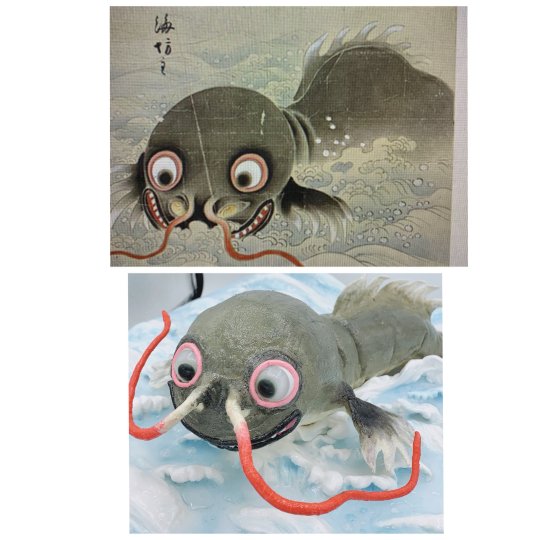
#japan#art#craft#youkai#monster#yokai#acotama#nekomata#bakeneko#ukiyoe#Utagawa Kuniyoshi#The Origin Story of the Cat Stone at Okabe#cat#hyakki yagyo#night parades of one hundred demons
2K notes
·
View notes
Text






Batsy Claro , Operetta & Elle e'dee for a Yokai collab on ig!!
#my art#monster high#mh#fanart#digital art#ibispaintx#cartoon#yokai#kimono#hyakki yagyo#elle e'dee#operetta#batsy claro#design#japanese#gashadokuro#rokorukubi#yama uba
25 notes
·
View notes
Text

Don't miss the Night Parade!
12 notes
·
View notes
Text




















chatbot sharing: Takeshi
👺 local tsundere tengu really good at starting wars, really bad at starting conversations
c.ai 🍓 janitor 🍰 dream tavern 💌 joyland 🧸 dream journey 🌼 yodayo 🦋 rochat 🍄 figgs 🌷 charhub 🌸 sakura 🍡 moemate 🍭 harpy
#character ai#janitor ai#dream tavern ai#joyland ai#dream journey ai#yodayo#rochat ai#figgs ai#charhub ai#sakura fm#moemate io#harpy chat#virtual friend#virtual companion#AI companion#AI chatbot#AI art#hyakki yagyo#modern yokai#urban fantasy#yokai among us#neon demon#supernatural#night parade of a hundred demons#urban legends#contemporary folklore#midnight monsters#tsundere#tengu
2 notes
·
View notes
Text
Hyakki Yagyo: Ashiya Doman
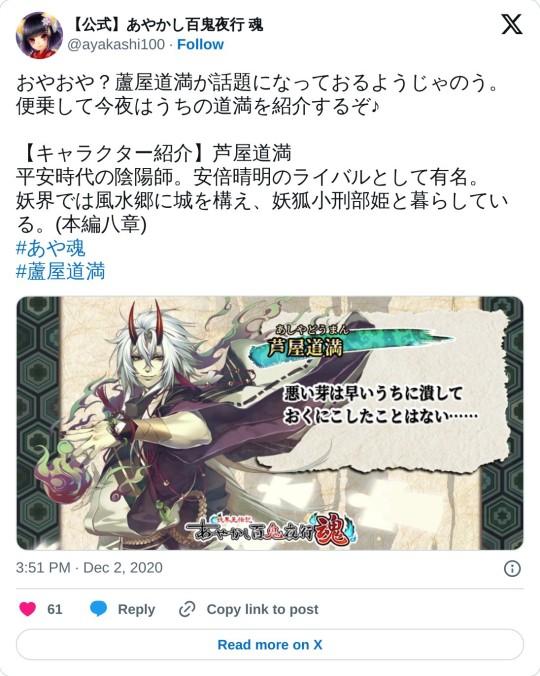
Translation of character profile.
[Character introduction] Ashiya Doman is an onmyoji from the Heian Period. He is famous as Abe no Seimei's rival. In the Yokai World, he has a castle in Fengshui Village and lives with the Yoko Osakabehime.
#Hyakki Yagyo#Hyakki Yagyo Mobile Card Game#Hyakki Yagyou#Ashiya Doman#Ashiya Douman#Osakabehime#Abe no Seimei Mentioned#Ayakashi Hyakki Yagyo
3 notes
·
View notes
Text

“Hyakki Yakō”
A fun art project I did, wonder if someone know these yokai creatures
1 note
·
View note
Text
Clothing set: Hyakki Yagyo
Mobile version:





Browser version:






Please click for full images
#naruto online#naruto online mobile#naruto ol#azure fang#breeze dancer#crimson fist#midnight blade#scarlet blaze#artworks set#clothing#clothing icons#icons#renders#hyakki yagyo
1 note
·
View note
Text
Is it me or do these demons look like sperm?

Tatami Hyakki Yagyo, Hyakki Yagyō, also transliterated Hyakki Yakō, is an idiom in Japanese folklore. Sometimes an orderly procession, other times a riot, it refers to a parade of thousands of supernatural creatures known as oni and yōkai that march through the streets of Japan at night
78 notes
·
View notes
Text

I’d be that smug too if my face was in that kinda proximity to Ais’s perk tit
#WIP#this is heavily inspired by Hyakki Yagyo#night parade of 100 demons#it’s a big piece and this is only a lil snippet#20 hours in and I’m not even finished with a majority of the lineart#what year will I be done? who knows#touchstarved game#touchstarved ais#touchstarved vere#my art
587 notes
·
View notes
Text


Hyakki Yagyo Guai ; Original Character ☆ Sum-Art
#hyakki yagyo guai#sum art#sum-art#original character#oc#oc figure#original character figure#anime#anime figure#figure#figure collecting#anime figurine#figurine#anime collecting#scale figure#myfigurecollection#manga
57 notes
·
View notes
Text
A fox traditionally shape-shifts by clenching a human bone between its teeth—thus the pile at the bottom. Toriyama Sekien, The Illustrated Demon Horde’s Night Parade (1776), on Kitsune-bi
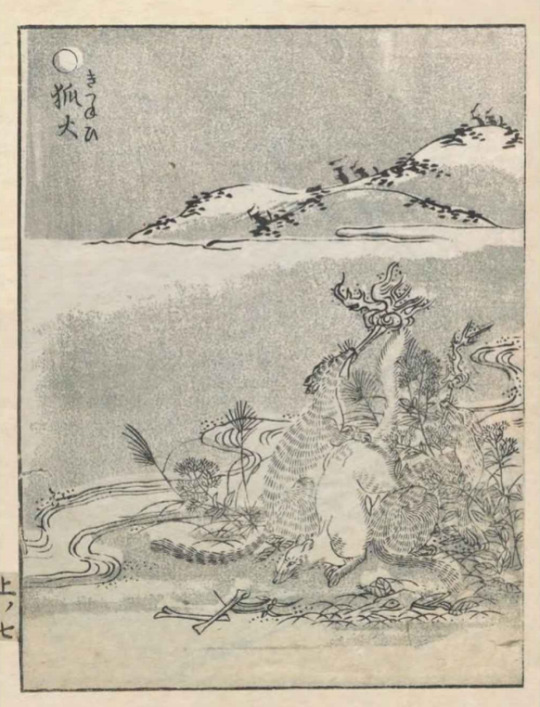
23 notes
·
View notes
Text

Following the pumpkin ghost figurine I reposted awhile ago, here is another adorable beast handmade by youkai-enthousiast artist Acotama.
Acotama's work is inspired by characters drawn in hyakki yagyo emaki (scrolls depicting "night parades of one hundred demons") popular during Edo-period. If some monsters were well known ones (kitsune, tengu, oni, kappa, etc.), many only appear once, making them cheeky creepers drawn for fun more than terrifying creatures of the night.
The discarded hakama shown here is awakening into a tsukumogami with a funny fox-deer face:
#japan#art#craft#figurine#sculpture#youkai#monster#hyakki yagyo emaki#night parades of one hundred demons#hyakki yagyo#Acotama#tsukumogami
298 notes
·
View notes
Text

npcs are called world characters in sundang langit ⚔️🌦️ ttRPG and making them follows the exact same procedure as Player Characters. you also Discover the instead of creating/generating them. featuring public domain art from Kawanable Kyōsai's 1890 hyakki yagyo (peep fudo myoo!)
up soon on: http://patreon.com/tagamantra
#ttrpg#fantasy#writing#rpg#indie dev#indie ttrpg#indie rpg#filipino#southeast asia#gamedev#web serial#philippines#dnd
40 notes
·
View notes
Text























chatbot sharing: Taro
🦝 When in doubt, play dead. When that fails, play human.
c.ai 🍓 janitor 🍰 figgs 🌷 charhub 🌸 sakura

#character ai#janitor ai#figgs ai#charhub ai#sakura fm#virtual friend#virtual companion#AI companion#AI chatbot#AI art#Hyakki Yagyo#modern yokai#urban fantasy#yokai among us#neon demon#supernatural#night parade of a hundred demons#urban legends#contemporary folklore#midnight monsters#raccoon yokai#tanuki
2 notes
·
View notes
Text
Ayakashi Hyakki Yagyo (あやかし百鬼夜行) Mobile Game Characters Part 2
[Character Introduction] Nekomata Tsugaru (ツガル) is a cat Yokai with multiple tails. Cats that have lived a long time often change, but Tsugaru has a history of changing into a nekomata out of resentment for being turned into a shamisen. Awakened to music in the yokai world and currently active as an underground idol. Her personality is aggressive.
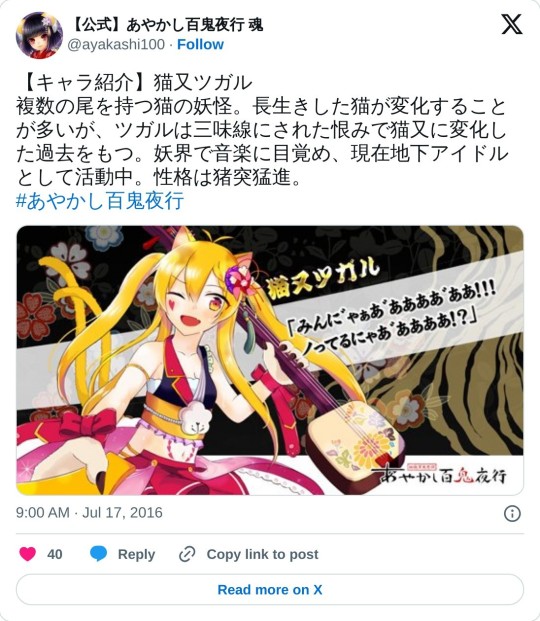
[Character introduction] Oni Woman (鬼女) (Benibo (紅房))
The general manager of a black market that exists in the late night road that connects yokai to it. She is a bold older sister who is strict with herself and others, but she has a soft spot for her children. She runs a black market according to her own beliefs.
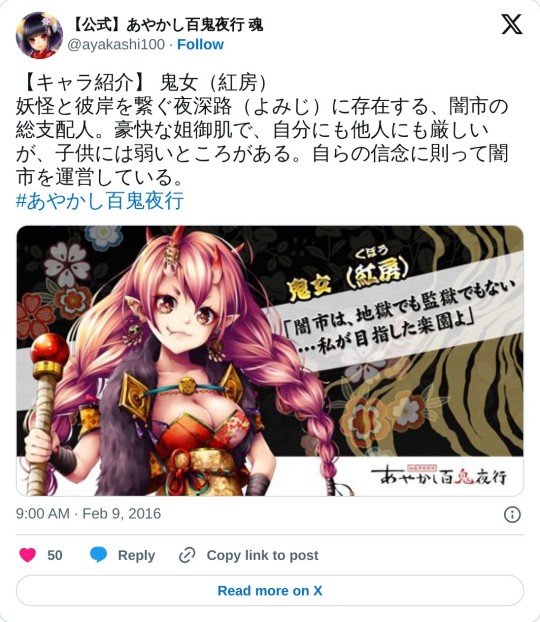
[Character Introduction] Kinkuma Doji (金熊童子)
An oni who protects the north of the mountain and is one of the Four Heavenly Kings who serves Shuten Doji of Mt. Oe. Originally from Mt. Kongo, he prided himself on his strength and became Shuten-Dōji's companion along with his twin brother, Ishikuma-Dōji. In Ayakashi, he appears as a giant who likes fighting more than having three meals a day.
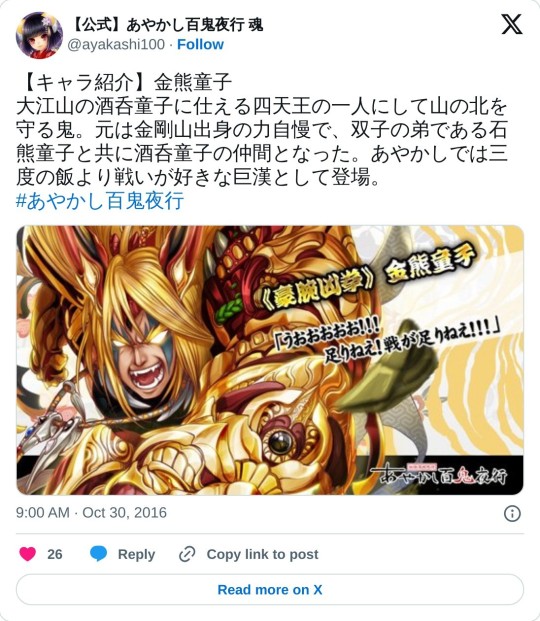
[Character introduction] Jiangshi Yang Biao (キョンシー(陽彪)) is a hot-blooded one who loves Kung Fu and is a master of Isao Fu. He was friends with Fei Lang and Hiro since childhood and died in the orphanage attack. At the time, he was not even a Taoist, and Ryugen's amateur techniques led to him becoming a kyungshi.
Note that this character is based off a being from Chinese Folklore.
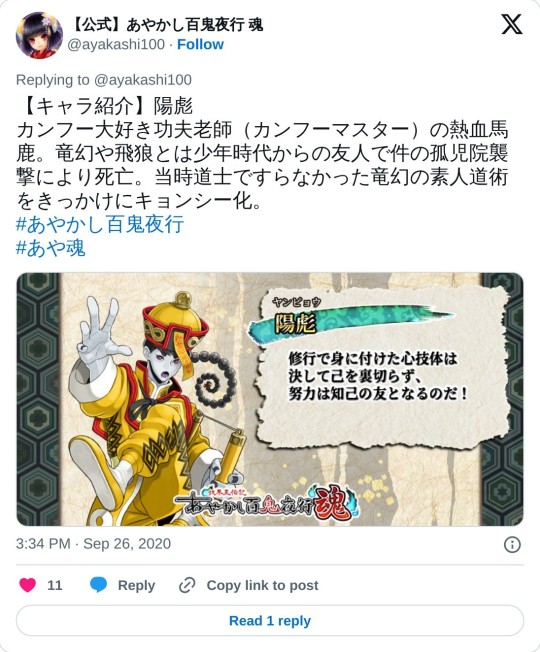
Also this is Hiro.
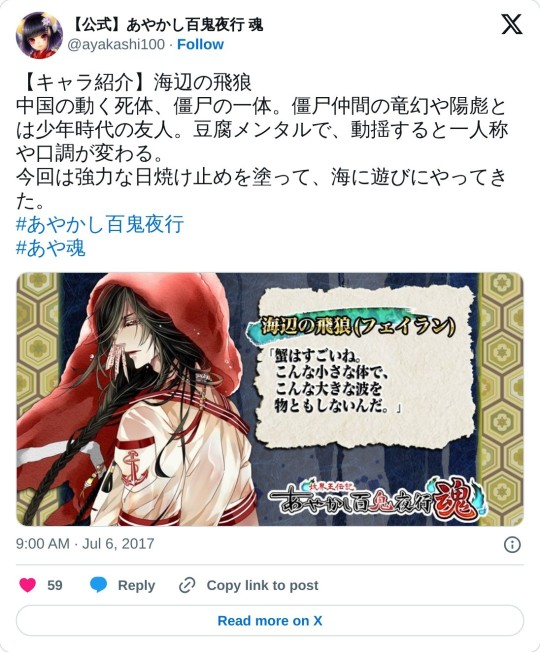
This is Fei Lang.
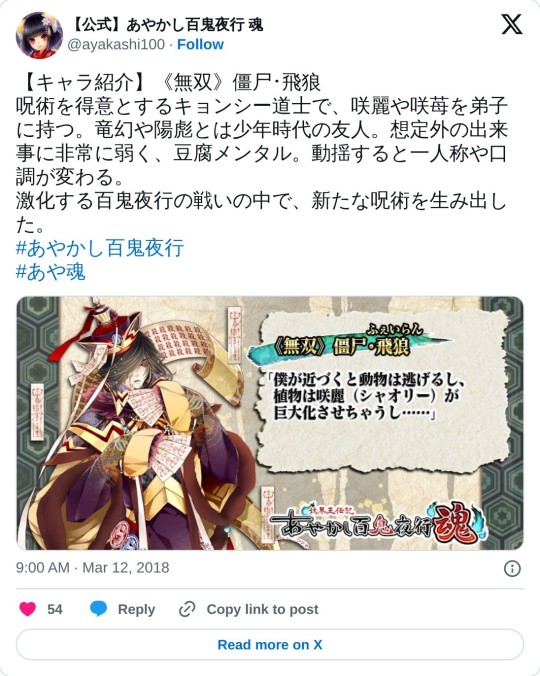
I will translate their character description later when I get to the part where they appear in the story.
[Character introduction] 《Dedicated to training》 Maomao (猫猫) & Huhu (虎虎) Children's wisdom. They are Yang Biao's favorite disciples and are devoted to his kung fu training under his passionate guidance.
[Character introduction] 《Dedicated to training》 Maomao & Huhu (Mao Maomao & Huhu)
Children's wisdom. They are Yang Biao's favorite disciples and are devoted to his kung fu training under his passionate guidance. Maomao, who are always in a straight line, and Huhu, who are cautious, are a good combination.
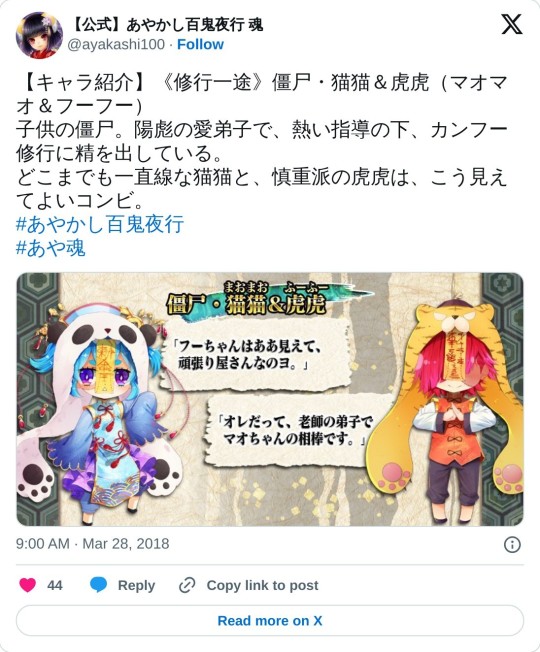
[Character Introduction] [Shiki Fighting Clothes] Iwanaga Hime (岩長姫)
A goddess in Japanese mythology who is said to be strong like a rock but ugly in appearance, and the older sister of Konohana Sakuya Hime. She is a muscular woman in the yokai world, and usually wears armor and serves as the leader of Hanasaki Village's Vigilante Group. This time, she appeared shyly in a costume given to her by her sister!
Note that in Japanese Mythology, Iwanaga Hime and Sakuya Hime were the daughters of Oyamatsumi and the granddaughters of Izanagi and Izanami.
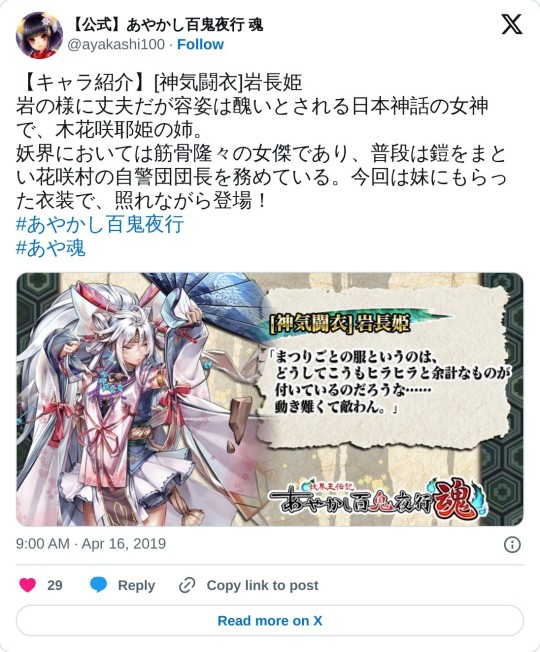
[Character Introduction] Konohana Sakuya Hime
A goddess who appears in Japanese mythology and is as beautiful as a blooming cherry blossom. Along with her older sister, Iwanaga Hime, she rules Hanasaki Village, one of the most famous cherry blossom viewing spots in the Yokai World. She is also the wood spirit of the Millennium Cherry Blossom, and is a gentle and gentle deity worthy of a beautiful flower.
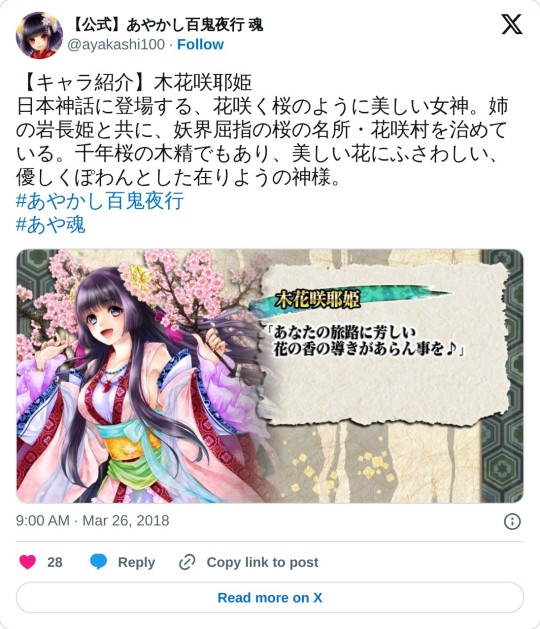
[Character Introduction] Hyakume (百目 Hundred Eyes) A multi-eyed yokai with a hundred eyes all over her body. When she encounters a human on the street at night, one of her countless eyeballs pops out and follows the human. A Yokai with a true stalker personality. A famous voyeur in the Yokai World. Before she knew it, She had settled into the position of photographer for Hyakki Yagyo.
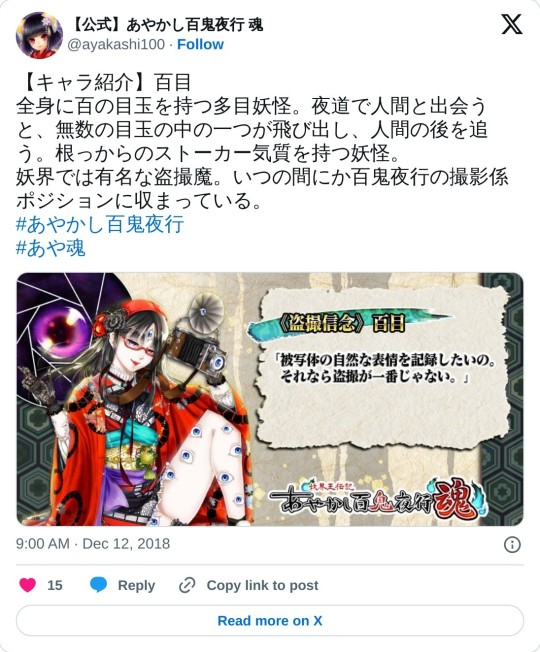
#Ayakashi Hyakki Yagyo#Hyakki Yagyo#Hyakki Yagyou#Nekomata#Tsugaru#Oni#Benibo#Kinkuma Doji#Jiangshi#Yang Biao#Maomao#Huhu#Iwanagahime#Konohana Sakuyahime#Sakuyahime#Hyakume#Hundred Eyes#Japanese Folklore#Japanese Mythology#Chinese Folklore
2 notes
·
View notes
Text

How to put a stop to this hyakki yagyo shit 101
#nah this is basically nagoshi no gi ritual#death mark#death mark spoiler#spirit hunter death mark#spirit hunter ng#spirit hunter kakuya#spirit hunter akira#akira kijima#death mark mary#death mark 2 spoilers#death mark yashiki#death mark mary dlc#yashiki kazuo#death mark meme#spirit hunter meme
93 notes
·
View notes